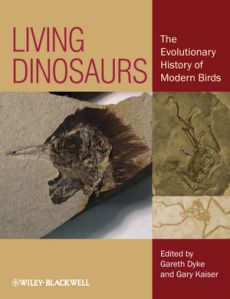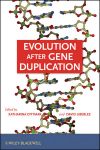Living Dinosaurs: The Evolutionary History of Modern Birds
In the 1860s, Thomas Huxley discovered fossils that led him to propose that modern birds evolved from ancient dinosaurs. Yet in the centuries following his discovery, the origins of modern birds remains greatly debated. In their new book Living Dinosaurs: The Evolutionary History of Modern Birds, researchers Gareth Dyke and Gary Kaiser set out to unite ornithologists and paleontologists to form a modern understanding of the evolution of birds for the beginning of the 21st century. Here are some things they had to say about their research and their book.
-
 Why does the lineage of birds from dinosaurs remain such a controversial issue over 140 years after Huxley’s description of the Archaeopteryx fossil?
Why does the lineage of birds from dinosaurs remain such a controversial issue over 140 years after Huxley’s description of the Archaeopteryx fossil?
The stature of Charles Darwin and Thomas Huxley ensured that the subject was not very controversial in the 19th century, and it really has not been controversial since the beginning of the 21st century. Gerhard Heilmann wrote an influential book arguing against dinosaurs as ancestors of birds which was accompanied by a long period in the 20th century without any important new bird fossils.
Ideas about the origin and evolution of birds simply stagnated. It was not until the end of the 20th century that John Ostrom1 demonstrated a clear anatomical link between theropod dinosaurs and birds, and dinosaurs were re-described as warm-blooded and active animals. Soon afterward, there was a flood of new bird fossils from South America, Antarctica, and, most importantly, from China. Many of these cemented the link to dinosaurs.
-
How important is it to bridge the gap between Ornithologist and Paleontologist?
In the 19th century both ornithologists and paleontologists were very interested in bones but ornithologists have since expanded their interests into ecology, physiology, genetics, and behavior. The flood of new bird fossils gives the opportunity for paleontologists to include these new sciences in their interpretation of long-dead groups. However, modern avian biology is an extremely complex field and they need to be very careful.
Ornithologists can also learn from paleontologists. We are still struggling to develop a generally accepted family tree for the living birds but paleontologists have led the way with cladistic analyses to develop a family tree for the dinosaurs. In addition, some fossils offer a useful historical record for major evolutionary events detectable in the chromosomes of living birds.
-
If a common perspective can be achieved, what do you see as the future for research into bird evolution?
There are two areas where research should provide answers in the very near future. One will be a closer linkage between the fossil record and the biomolecular clocks; both record major evolutionary events. Second, improved biomolecular analyses should eventually provide a clearer understanding of the relationships among living birds and steer us to the lineage or lineages that survived the great extinction at the end of the Creataceous to give us our living birds.
-
New research questions are replacing the old controversies, such how birds survived the mass extinctions of the Mesozoic Era. How do you think the ancestors of modern species survived?
It is hard to imagine how anything survived the end of the Mesozoic. It must have been a matter of incredible luck. Not only did the great extinction sweep away several lineages of small feathered dinosaur but also all of the Enantiornithine birds. The enantiornithines were arguably more successful and diverse than the ornithine lineage that did manage to survive.
The fossil record only offers evidence for the survival of basal anseriforms, the ancestors of modern ducks and geese. Some basal anseriforms still survive in South America (screamers) and Australia (magpie goose). However the ratites (ostriches, emus, rheas, kiwi, etc.) are descendants of an earlier lineage and logic implies that they must also have survived the great extinction. They did so without leaving any fossils. The presence of both surviving groups in the southern hemisphere hints that they survived by being as far away as possible from the asteroid impact that is currently believed to be the cause of the great extinction.
-
How do you think having a clear understanding of the evolution of birds will help us understand what we need to do to we help them survive the impact of human activity on the planet?
The fossil record shows the eventual extinction of groups that were successful for a very long time. Often there is no clear explanation for their disappearance but other losses can be linked to important events in the fossil record, especially during the period since the Mesozoic.
For instance, the vulture-like teratorns disappeared with the mammoths and other megafauna just a few thousand years ago and several species of auk disappeared from the North Atlantic during a period of ocean warming in the Pliocene. We may not be able to preserve species faced with very large-scale changes to their environment but understanding the nature of the problems and the mechanisms driving them will help us focus our efforts in more effective ways.
Resources from Wiley on This Topic 
Glorified Dinosaurs: The Origin and Early Evolution of Birds by Luis M. Chiappe

Introduction to Paleobiology and the Fossil Record by Michael J. Benton and David A. T. Harper
1. OSTROM, J. (1976). Archaeopteryx and the origin of birds Biological Journal of the Linnean Society, 8 (2), 91-182 DOI: 10.1111/j.1095-8312.1976.tb00244.xEco World Content From Across The Internet. Featured on EcoPressed 7 ways the military is embracing cleantech
Featured on EcoPressed 7 ways the military is embracing cleantech






















